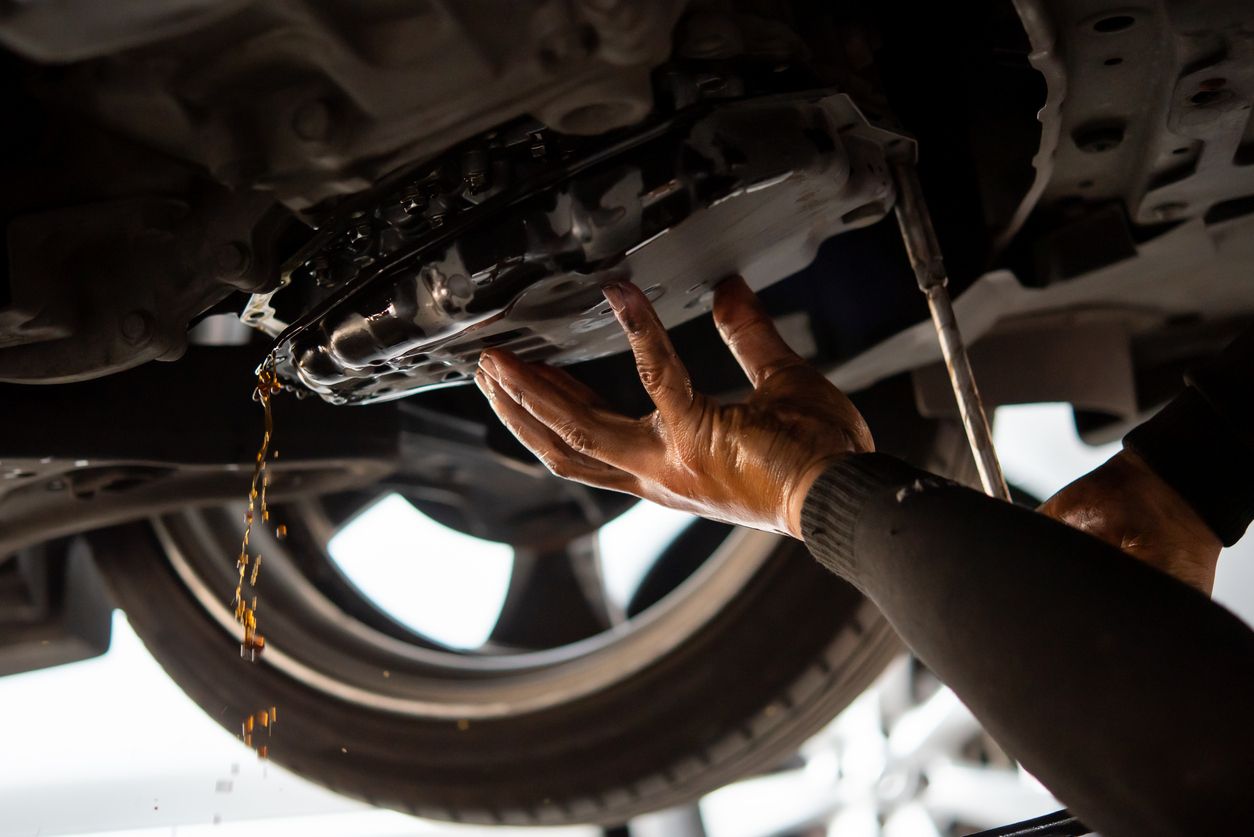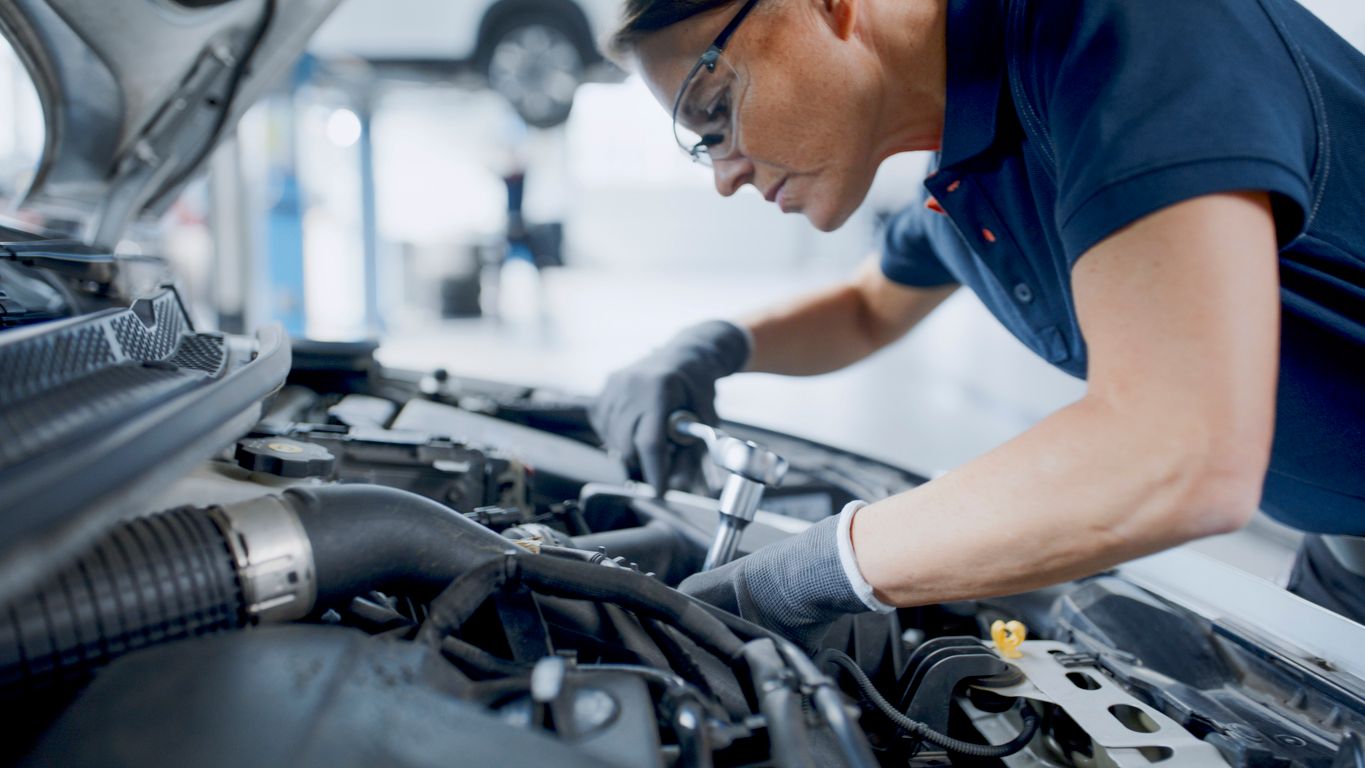Maintaining your vehicle’s transmission is critical to keeping your ride smooth, safe, and reliable. One key aspect of transmission care is getting a transmission fluid exchange. But what is a transmission fluid exchange service, are they necessary for your vehicle, and how do you know when it's time to get one? Read on to learn everything you need to know about this essential vehicle maintenance service.
What is Transmission Fluid, and Why Does it Matter?
Transmission fluid is crucial to your car — without it, your transmission would rapidly self-destruct. In both automatic and manual vehicles, transmission fluid cleans, lubricates, and cools parts, ensuring smooth and optimal shifting.
Like any other fluid, though, transmission fluid breaks down and accumulates contaminants over time, which reduces its performance and can make your transmission work harder. So, to keep your transmission working properly, you should change its fluid at regular intervals according to the Manufacturer's Suggested Maintenance Schedule.
What is a Transmission Fluid Exchange?
A transmission fluid exchange is the process of draining old, worn-out fluid from the transmission and replacing it with fresh, clean fluid. This service helps maintain the integrity of your transmission and can even help maximize the lifespan of your vehicle.
Over time, transmission fluid can break down, lose its lubricating properties, and become contaminated with metal shavings or other debris. When this happens, a transmission fluid exchange becomes necessary. That is if transmission damage has not already been done. It's always best to be proactive with maintenance services instead of being on the tail end of repair services.
Is Transmission Fluid Exchange Necessary?
Transmission fluid exchanges are crucial because driving with degraded transmission fluid can lead to costly repairs. If ignored, it could result in serious transmission damage or complete failure.
In short, any type of transmission fluid replacement is good for your vehicle, provided the correct procedures and fluid types are used. However, transmission fluid exchanges can be extraordinarily beneficial if your vehicle’s transmission fluid is heavily used or contaminated.
With manual transmissions, most of the fluid is removed during a conventional drain and refill. However, automatic transmissions typically retain the majority of their fluid during this service, which is why fluid exchanges are more important for automatic transmissions. A fluid exchange on an automatic transmission gets the majority of the used fluid out and replaced with fresh fluid.
Transmission Fluid Exchange: When to Get Serviced
There’s no one-size-fits-all answer to how often you should change your transmission fluid. Ultimately, the decision is yours to make, but it’s important to have it done at a regular interval.
Fluid change intervals vary according to your vehicle’s make, model, driving conditions, and manufacturer recommendations. They may also vary based on automatic versus manual transmissions. Additionally, some transmissions can travel 100,000 miles without a change, while others have to be changed every 15,000 miles. This number can also fluctuate if a vehicle is subject to severe driving conditions, like towing or frequent stop-and-go traffic. Driving through flooded streets can also allow water to be drawn into some transmissions, particularly if their seals are leaking.
Your best bet is to consult your owner’s manual or ask a trusted service provider, like Firestone Complete Auto Care, to guide you based on your vehicle's specific needs.
Signs You Need a Transmission Fluid Exchange
There are certain signs to watch for that could indicate it’s time for a fluid exchange or repair. Here are just a few:
- Weird Smells: Strange odors could indicate that your transmission is leaking onto components like your exhaust pipes. This is not only a fire hazard, but also a sign that you probably need some transmission maintenance.
- Poor Shifting: If shifting is difficult or delayed or there are noticeable slipping, grinding, or jumping sensations during acceleration, your transmission likely needs maintenance or repair.
- Shaking: If your car shakes or shudders at any speed, it could indicate a transmission problem that requires a transmission inspection.
Other Firestone Complete Auto Care Transmission Services
In addition to transmission fluid exchanges, Firestone Complete Auto Care offers a range of other transmission services to keep your vehicle in peak condition:
Transmission Filter and Pan Gasket Replacement
This service is specific to automatic transmissions. Our technicians remove the transmission pan, drain the fluid, replace the old transmission filter with a new one, and reinstall the pan with a new gasket. Fresh fluid is then added from the fill hole.
However, this service only replaces the fluid inside the transmission pan, not the fluid in the torque converter, transmission lines, or cooler. For a more complete fluid change, this service can be combined with a transmission fluid exchange either before or after the filter and gasket replacement.
Transmission Drain and Fill
Suitable for both manual and some automatic transmissions, this service involves removing the drain plug, draining the old fluid, and adding fresh fluid from the fill hole. In a manual transmission, this process replaces almost all of the old fluid, while in an automatic transmission, only the fluid in the transmission pan is replaced.
Shift into High Gear with Firestone Complete Auto Care
Regular transmission fluid exchanges are essential to your vehicle’s longevity and performance. But you don’t have to do it yourself — our team is ready to provide the knowledgeable advice and quality transmission service your vehicle needs to stay in top condition.
To ensure transmission fluid servicing is available in your area, contact your nearest Firestone Complete Auto Care location. Then, schedule an appointment to keep your ride cruising smoothly.



